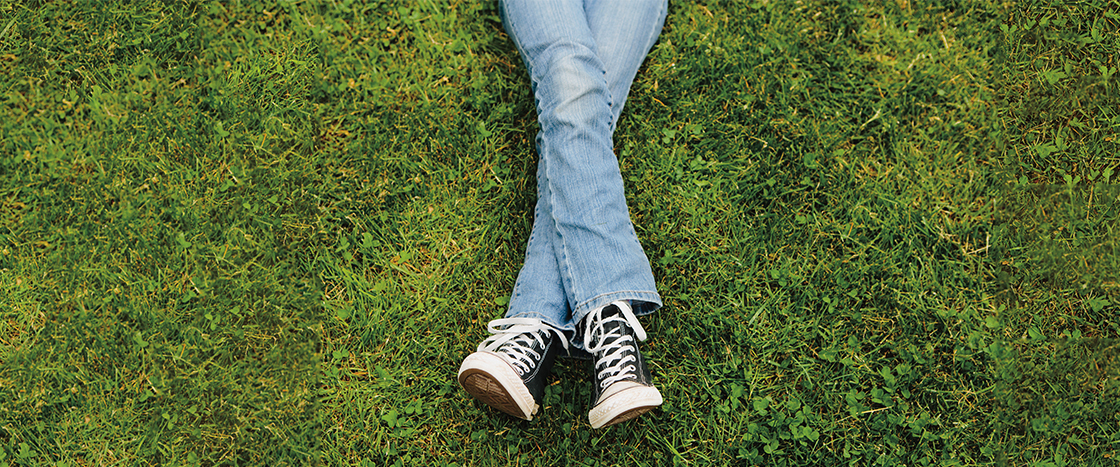blickwinkel/Alamy Stock Photo (indigo); STEVE GSCHMEISSNER/SCIENCE SOURCE (bacteria)
The new nontoxic dye is made by combining traits of the indigo plant (top) and a type of bacterium (bottom).
Do you wear blue jeans? If so, you’re not alone! The sturdy pants are one of the most popular pieces of clothing of all time—and they have a long history. Denim, the material that jeans are made of, was first used for ship sails, tents, and wagon covers hundreds of years ago. People in California began making pants out of the fabric in the 1870s.
Today, most jeans are made in places outside the U.S. Unfortunately, the process of coloring them blue can come with a hidden cost. The chemicals that many jeans manufacturers use are toxic. If they spill into the environment, they can harm people and wildlife.
Tammy Hsu is a scientist at the University of California, Berkeley. In 2015, she developed an environmentally friendly way to make jeans blue. Her process involves using a surprising ingredient: tiny organisms called bacteria. In 2019, Hsu founded a business to make blue jeans “green” around the world.
Do you wear blue jeans? If so, you’re not alone! These pants are one of the most popular pieces of clothing of all time. And they have a long history. Jeans are made from denim. The material was invented hundreds of years ago. It was used as fabric for ship sails, tents, and wagon covers. Then people in California began using the fabric to make pants. That was in the 1870s.
Today, most jeans are made outside the U.S. Creating their blue color often comes with a hidden cost. Jeans makers use chemicals to dye jeans. These substances can be toxic.
Tammy Hsu is a scientist. She works at the University of California, Berkeley. She created a safer way to make jeans blue. Her surprising process relies on tiny creatures called bacteria. Hsu started a business in 2019. It aims to make blue jeans that are “greener.” That means they’re better for the environment.

